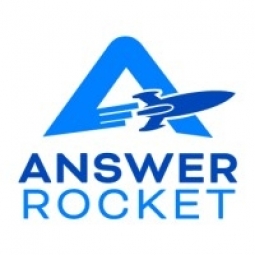Customer Company Size
Mid-size Company
Region
- America
Country
- United States
Product
- AnswerRocket
Tech Stack
- SAP
Implementation Scale
- Enterprise-wide Deployment
Impact Metrics
- Revenue Growth
- Productivity Improvements
Technology Category
- Analytics & Modeling - Real Time Analytics
Applicable Industries
- Electronics
Applicable Functions
- Sales & Marketing
- Business Operation
Use Cases
- Predictive Replenishment
- Real-Time Location System (RTLS)
Services
- Data Science Services
About The Customer
SnapAV is a global supplier with $200M in revenue. The company sells electronic equipment to custom A/V professionals. The company is led by President Adam Levy, who encourages a culture of curiosity within the team. The company is always exploring ways to improve their performance. However, their business intelligence methods were proving to be a challenge, as it required the involvement of a technical analyst to study any aspect of their business. This often resulted in delays, discouraging team members from asking questions due to uncertainty about the payoff.
The Challenge
SnapAV, a global supplier of electronic equipment, was facing a challenge with their business intelligence methods. The process of studying an aspect of their business required the involvement of a technical analyst, which could take hours or even days. This was a significant hindrance to the company's culture of curiosity and continuous improvement. The delay in obtaining insights often discouraged team members from asking questions, as they were unsure if the payoff would be worth the wait.
The Solution
SnapAV implemented AnswerRocket, a data analytics solution, for their category managers, marketing, and finance groups. The solution was integrated with over 2G of data from their SAP system. The implementation process was swift, taking only three weeks from kickoff to launch. With AnswerRocket, 80 – 90% of data requests could now be answered in seconds by the business experts themselves. This allowed for immediate insights whenever a question or idea arose. The solution's user-friendly interface and search-like experience made analytics easy and accessible for the team.
Operational Impact
Quantitative Benefit

Case Study missing?
Start adding your own!
Register with your work email and create a new case study profile for your business.
Related Case Studies.

Case Study
Remote Temperature Monitoring of Perishable Goods Saves Money
RMONI was facing temperature monitoring challenges in a cold chain business. A cold chain must be established and maintained to ensure goods have been properly refrigerated during every step of the process, making temperature monitoring a critical business function. Manual registration practice can be very costly, labor intensive and prone to mistakes.

Case Study
Predictive maintenance in Schneider Electric
Schneider Electric Le Vaudreuil factory in France is recognized by the World Economic Forum as one of the world’s top nine most advanced “lighthouse” sites, applying Fourth Industrial Revolution technologies at large scale. It was experiencing machine-health and unplanned downtime issues on a critical machine within their manufacturing process. They were looking for a solution that could easily leverage existing machine data feeds, be used by machine operators without requiring complex setup or extensive training, and with a fast return on investment.

Case Study
Cloud Solution for Energy Management Platform-Schneider Electric
Schneider Electric required a cloud solution for its energy management platform to manage high computational operations, which were essential for catering to client requirements. As the business involves storage and analysis of huge amounts of data, the company also needed a convenient and scalable storage solution to facilitate operations efficiently.

Case Study
Leveraging the IoT to Gain a Competitive Edge in International Competition
Many large manufacturers in and outside Japan are competing for larger market share in the same space, expecting a growing demand for projectors in the areas of entertainment, which requires glamor and strong visual performance as well as digital signage that can attract people’s attention. “It is becoming more and more difficult to differentiate ourselves with stand-alone hardware products,” says Kazuyuki Kitagawa, Director of Service & Support at Panasonic AVC Networks. “In order for Panasonic to grow market share and overall business, it is essential for us to develop solutions that deliver significant added value.” Panasonic believes projection failure and quality deterioration should never happen. This is what and has driven them to make their projectors IoT-enabled. More specifically, Panasonic has developed a system that collects data from projectors, visualizes detailed operational statuses, and predicts issues and address them before failure occurs. Their projectors are embedded with a variety of sensors that measure power supply, voltage, video input/ output signals, intake/exhaust air temperatures, cooling fan operations, and light bulb operating time. These sensors have been used to make the projector more intelligent, automatically suspending operation when the temperature rises excessively, and automatically switching light bulbs. Although this was a great first step, Panasonic projectors were still not equipped with any capability to send the data over a network.









